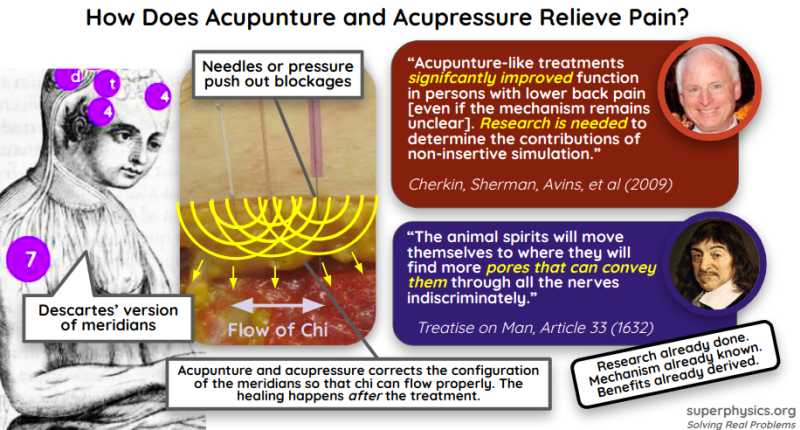How Acupuncture and Acupressure Work
Table of Contents
Traditional Chinese Medicine deals with chronic pain and emotional stress through acupunture and acupressure.
Both techniques work by restoring the flow of the chi to specific organs by focusing on acupoints on meridians. This is also done by yoga in a more general way.
These meridians are immaterial or aethereal channels that go out of the immaterial crown chakra (aethereal vortex in Cartesian Physics). These form a web like those formed by galaxy clusters.

The acupoints are like the junctions or parts of the web that have the most clusters.
The pineal gland is the material version of the aethereal crown chakra.
The fetus builds the material nerves and circulatory system of blood around or through these channels after the 7th week when the pineal gland is formed.
These channels let the animal spirits go to and fro, like an immaterial hydraulic system.
The animal spirits are known as chi in Chinese medicine, pneuma in ancient Greece, and vayu in Hinduism, proving that they are universal.
These animal spirits go out from the pineal gland to the organs and muscles to facilitate action and expression from the metaphysical onto the physical world.
They also go from the organs and muscles to the pineal gland, facilitating perception and learning.
A 2009 study PROVED that Asian acunpuncture and acupressure reduced back pain. Other studies have shown that they also helped against Alzheimer’s and Parkinson’s diseases.
But the 2009 study wrongly said that the mechanism was UNKNOWN when in fact it has been already known since the ancient times of Aristotle and Taoism.
The main problem is that modern educated people do not accept it because the mechanism is not based on matter or shallow perceptions, but is based on subtle ones which are not taught by the educational system.